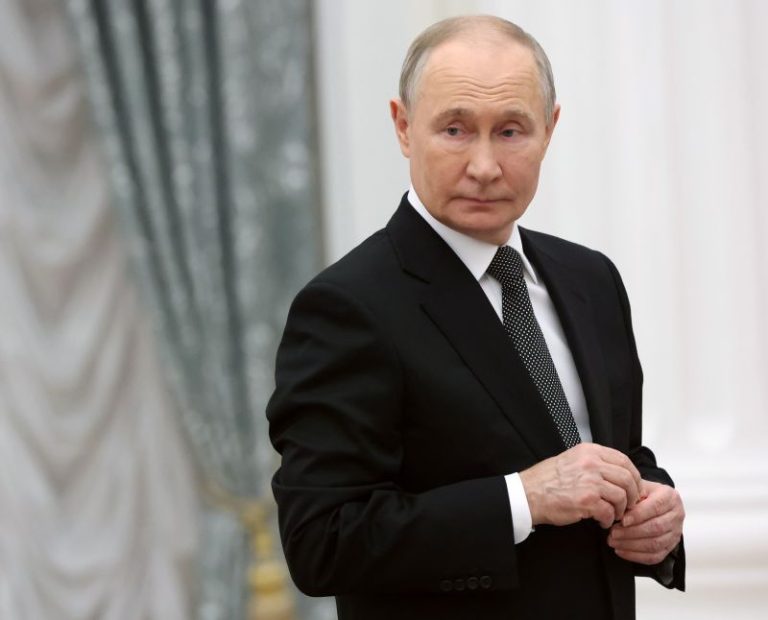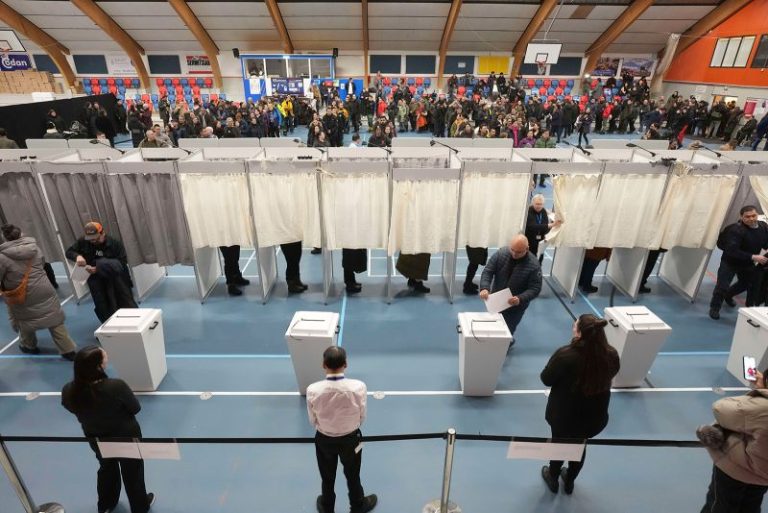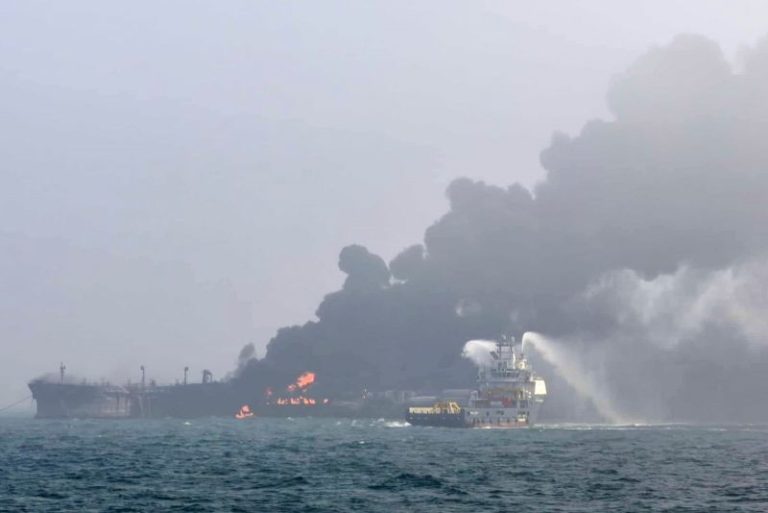“My God, you also handed my son freedom,” said Patricia Cortes when she left El Buen Pastor prison on September 17, 2024. She had hoped to be able to guarantee her son’s food and health upon leaving prison. However, after six months of freedom, although she appreciates being a beneficiary of Colombia’s recent Public Utility Law, she points out a flaw: “We leave the prison vulnerable.”
The law allows female heads of households to serve their sentences outside of prison in exchange for unpaid community service. It is considered the first criminal policy with a gender focus in Colombia, and a model for Latin America. However, two years after its approval, obstacles still exist for incarcerated women to benefit from the law and reintegrate into society effectively.
Cortes, 22, entered El Buen Pastor prison in Bogota on October 31, 2023. She was sentenced to six years and five months in prison for conspiracy to commit a crime, drug trafficking, manufacturing, or possession of narcotics. Her son was born four days later.
When she first heard about the Public Utility Law, she had been denied house arrest seven times, she says.
She met the three requirements to access the benefit: being a female head of household, having a sentence of less than eight years or for crimes related to theft or narcotics, and having committed it under conditions of marginality.
“My mom sold drugs, and I accompanied her. I foolishly got caught; we were accused of being leaders of a gang,” she says. However, she insists she had no intention of harming anyone and that necessity drove them: “We are eight siblings, five are minors. My dad is homeless. My mom worked in the central park of Fusagasuga selling corn, bubbles, ice cream, but what she earned was not enough for the household.”
This context, along with the documentation her lawyer gathered, which included interviews with her siblings showing how her imprisonment had impacted them, was enough for a judge to grant her release from prison.
The Public Utility Law was passed on March 8, 2023. Since then, 133 women have been released as of February 28, 2025, according to data from the Ministry of Justice of Colombia. Between 2,000 and 3,000 people are believed to meet the requirements to be beneficiaries, according to the non-profit organization Mujeres Libres.
Lack of awareness of the law and the difficulty in documenting cases are some of the main obstacles identified by civil society organizations monitoring how it is applied. Added to this are the interpretations made by judges, who decide whether or not to grant the benefit, regarding the concept of marginality and care.
To address this issue, organizations like Mujeres Libres, which works to guarantee the rights of women in prison and their families, have conducted workshops to socialize the regulation in prisons and with judicial branch officials.
However, Claudia Cardona, director of the organization, says that even when women can overcome these obstacles, they face the absence of a public policy for leaving prison: “Women have no jobs, the financial system shuts down, they face the breakdown of family ties, there is no psychosocial support. One is condemned for life,” she says.
“When I left prison, I didn’t look back,” says Cortes. She received her release notice the same day as her mother, who was also granted the benefit. They arrived unexpectedly at their home in Fusagasuga, a town 70 kilometers (43 miles) from Bogota, near midnight. Her grandmother cried with emotion while some of her siblings did not recognize her. “I was a complete stranger,” she says.
Adapting to her new daily life has not been easy. The preparation for freedom course she took in prison did not teach her how to face stigma: “If I have a criminal record, how do I find a job?” she says.
During the six months she has been out of prison, she has only received offers for day jobs as a security guard, driver, informal seller, and domestic worker, even though she has training as a nursing assistant.
Her priority now is the community service she provides, from Monday to Friday, at the Colombian Institute of Family Welfare, through which she fulfills her sentence. However, the schedules have proven an obstacle to finding stable employment and, consequently, obtaining the financial resources to fulfill her role as a female head of household, she says.
The Public Utility Law promised the issuance of a public employability policy aimed at improving job training in prisons and ensuring that women who benefit from the policy are able to join the labor market. However, the two-year deadline given to the Ministry of Labor, in partnership with the Ministry of Education and the Ministry of Commerce, is nearing expiration, and there has been little progress in designing the employability policy.
“How do I manage my time between my son, work, and social service?” says Cortes. She is a single mother and does not have a support network to help with her son’s care as she did in prison.
Although Colombian law allows the children of incarcerated individuals to be with their mothers in detention centers until the age of three, it also requires them to designate two “guardians” who can take care of the child during temporary leaves or other situations like medical appointments. During Cortes’ time in prison, this role was assumed by a woman from a pastoral group living in Bogota, three hours away. Now, she helps by taking care of her son during the week.
“I know that next year my son will be with me every day, so I won’t break down,” Cortes says while making plans. By February 2026, she will have completed the community service time required by the Ministry of Justice. “I’m going to focus on completing my sentence (…) I want to enroll in university, study law, and help women in prison. I also see myself playing professional indoor soccer.”
Even though there are obstacles to its implementation, the Public Utility Law is still a landmark in terms of gender, for its focus on women who are deprived of their liberty, says Liliana Sanchez, PhD in Legal Sciences and Vice-Rector of Research at the Universidad Javeriana.
The research “Women and Prison in Colombia,” co-authored by Sanchez, highlights the family context of female offenders, the reasons they enter the criminal justice system, and the effects of their incarceration on their families.
One of the main conclusions is that, before their arrest, most women were heads of households, more than half had not completed high school, and they belonged to low socioeconomic strata.
Moreover, since they were the primary caregivers, their detention had adverse impacts on their children. Most are left under the care of extended family, and in some cases, are separated from their siblings. In contrast, “when the father is detained, the children remain under the mother’s care,” the report indicates.
Regarding the criminal profile of women, the research shows that the main crimes for which many women are convicted are drug trafficking, conspiracy to commit a crime, and theft. According to the research, many have committed non-violent crimes and do not pose a serious risk to public safety.
Identifying these differences between men and women “in terms of the path to crime and the differentiated impacts of prison,” says Sánchez, lies in the fact that more effective criminal policies can be formulated to prevent women from reoffending and exacerbating gender inequality.
The ‘war on drugs’ and its disproportionate impact on women in Latin America
The situation in Latin America is no different. Over the past two decades, there has been an exponential increase in the female prison population, according to a 2020 report by the U.S. human rights organization WOLA, which concludes that this trend is due to drug laws disproportionately affecting women.
“The roles in which women are generally recruited in drug markets are high-exposure roles (…) When there is an operation, they are the first to be detected in the act and are quickly criminalized,” explains Isabel Pereira, coordinator for the drug policy line of the non-profit organization Dejusticia.
However, the legislation does not distinguish levels of participation in drug trafficking. “Everything is typified in the same way. The big boss of the criminal network directing a drug operation is treated the same as the woman delivering joints in a store,” she says.
A gender-focused criminal policy that can divert women from the penal system and avoid perpetuating cycles of poverty is important, according to the International Guidelines on Human Rights and Drug Policy of the United Nations Development Program.
It is a double tragedy, Pereira says, as incarceration has dramatic consequences for women and is ineffective in terms of public policy: “The State spends large sums pursuing women and keeping them in prison, but it does not affect the operation of drug markets in the slightest.”
This post appeared first on cnn.com










